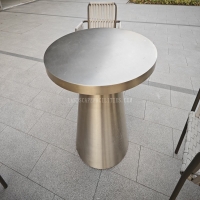Welcome to the website for landscape facilities products and knowledge.
How do landscape tables perform in terms of resistance to mold, mildew, and insect damage?
Landscape tables are designed to withstand harsh outdoor conditions, including exposure to moisture, humidity, and pests. Their resistance to mold, mildew, and insect damage depends on the materials and treatments used in their construction.
High-quality landscape tables often feature naturally resistant woods like teak, cedar, or redwood, which contain natural oils that repel insects and inhibit fungal growth. Alternatively, synthetic materials such as polywood or powder-coated metals offer excellent resistance to decay and pests.
Many manufacturers apply protective sealants or pressure treatments to enhance durability. These treatments create a barrier against moisture absorption, preventing mold and mildew formation. For insect resistance, some tables incorporate borate-based preservatives that deter termites and wood-boring beetles.
Regular maintenance, such as cleaning and resealing, can further prolong a landscape table's lifespan. Choosing tables with proper drainage and UV-resistant finishes also minimizes damage risks. By selecting the right materials and treatments, landscape tables can remain durable and attractive for years, even in challenging environments.
Related search:

Recommendation
Outdoor Metal Table - Classic Outdoor Furniture, Stainless Steel Table, Durable and Reliable